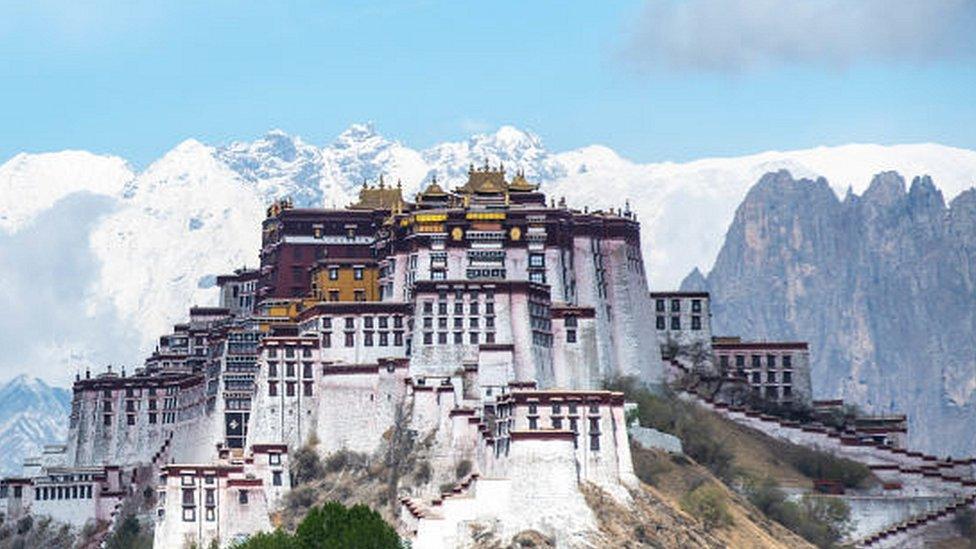A recent report issued by Stockholm-based environmental researchers has raised urgent alarms over China’s escalating infrastructure and development projects in Tibet, warning that these mega-projects are driving the region toward “extreme ecological stress.” Released ahead of the upcoming COP30 climate summit, the report highlights the significant environmental degradation caused by large-scale mining, dam construction, and urban expansion initiatives, which threaten the fragile Himalayan ecosystem that is vital to both regional biodiversity and global climate stability. The findings come as international attention increasingly focuses on the environmental and geopolitical implications of China’s ambitious plans in Tibet, underscoring the urgent need for sustainable development strategies in one of the world’s most sensitive ecological zones.
China’s Mega-Projects Intensify Environmental Degradation in Tibet Raising Alarm Bells
Recent large-scale infrastructure and resource extraction projects in Tibet have exacerbated the region’s fragile ecosystem, prompting international concern. According to the latest Stockholm report, these developments-ranging from hydropower dams to mining operations-are accelerating environmental degradation at an unprecedented pace. The report highlights massive deforestation, soil erosion, and a sharp decline in biodiversity, citing satellite imagery that reveals alarming changes over the past decade. Furthermore, water sources that sustain both local communities and downstream populations are increasingly under threat, raising urgent questions about long-term water security in the greater Himalayan region.
Key environmental impacts identified include:
- Disruption of native wildlife habitats, particularly for endangered species.
- Pollution from mining activities contaminating rivers and groundwater.
- Increased risk of landslides and natural disasters due to unstable land caused by construction.
- Accelerated glacial melting linked to infrastructural heat emissions and deforestation.
Below is a brief overview of the environmental changes documented:
| Environmental Indicator | Change (2013-2023) | Impact Severity |
|---|---|---|
| Forest Cover Loss | 12% | High |
| Glacial Retreat | 15% | Critical |
| Soil Erosion Rates | 28% increase | Moderate |
| Water Quality Decline | Significant | High |
Stockholm Report Reveals Long-Term Risks to Tibetan Ecosystems and Indigenous Communities
A recent report released by Stockholm’s leading environmental analysts highlights the escalating environmental threats posed by China’s extensive infrastructure developments in Tibet. The report details how dam construction, mining operations, and expansive road networks are severely disrupting fragile ecosystems, pushing the region towards what experts describe as “extreme ecological stress.” These developments have triggered widespread habitat loss, degradation of vital watersheds, and altered natural processes, raising alarms about the sustainability of Tibet’s unique biodiversity.
Beyond environmental concerns, the report emphasizes the profound impacts on indigenous communities, whose traditional livelihoods and cultural heritage are intimately linked to the land. Displacement, reduced access to natural resources, and exposure to environmental pollution are compounding social vulnerabilities. The document calls for urgent, inclusive policy interventions ahead of global climate negotiations, underscoring the need to balance development with ecological preservation and respect for indigenous rights.
- Dam Projects: Significant alteration of river flow affecting aquatic life and agriculture.
- Mining Activities: Soil contamination and loss of arable land.
- Transportation Networks: Fragmentation of wildlife corridors.
- Indigenous Impact: Cultural erosion and displacement risks.
| Impact Area | Current Status | Projected Risks (10 years) |
|---|---|---|
| Water Resources | Degraded | Severe scarcity |
| Forest Cover | Declining | Critical loss |
| Wildlife Populations | Vulnerable | Potential extinction |
| Indigenous Communities | At risk | Heightened displacement |
Urgent Calls for Sustainable Development Policies Ahead of COP30 Summit
According to a recent Stockholm report, the rapid expansion of China’s infrastructure megaprojects in Tibet is intensifying the region’s ecological vulnerability to an unprecedented degree. The initiatives, designed to boost connectivity and economic growth, have inadvertently thrust Tibet into what experts are calling “extreme ecological stress.”strong> Key environmental indicators such as glacial retreat, biodiversity loss, and soil degradation are exhibiting alarming trends, threatening the fragile ecosystems that support both local communities and global climate stability.
Environmentalists and policy advisors are urging immediate action from international and national stakeholders ahead of the COP30 summit. Their recommendations include:
- Implementing rigorous environmental impact assessments for all future infrastructure projects.
- Enhancing cross-border cooperation to monitor ecological changes and enforce sustainability standards.
- Investing in alternative energy solutions to reduce reliance on carbon-intensive development.
- Empowering indigenous voices in decision-making processes related to land and resource management.
| Impact Area | Current Status | Recommended Action |
|---|---|---|
| Glacial Cover | Decreased by 15% over 10 years | Expand climate monitoring stations |
| Biodiversity | Key species endangered | Establish protected reserves |
| Soil Quality | Significant erosion reported | Introduce sustainable farming practices |
The Way Forward
As COP30 approaches, the Stockholm report’s stark warning underscores the urgent need for a balanced approach to development in Tibet-one that safeguards its fragile environment while pursuing economic ambitions. China’s mega-projects, while transformative, risk pushing the region towards irreversible ecological damage. The international community, policymakers, and stakeholders must weigh these environmental costs carefully, ensuring that Tibet’s unique ecosystem is preserved for future generations amidst global climate commitments.
